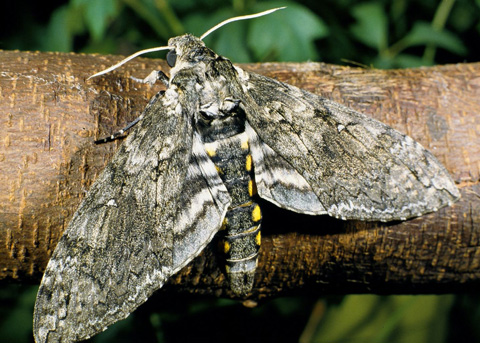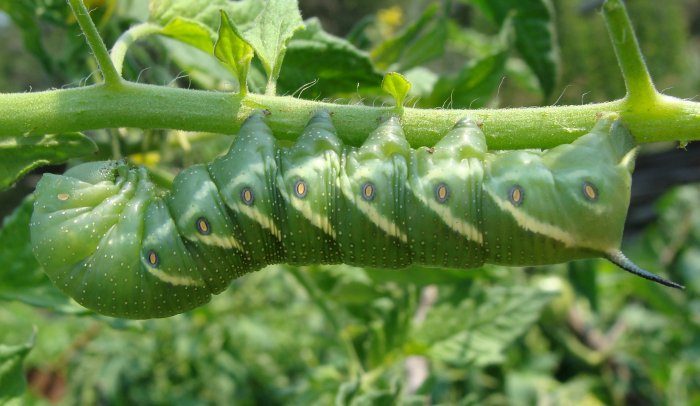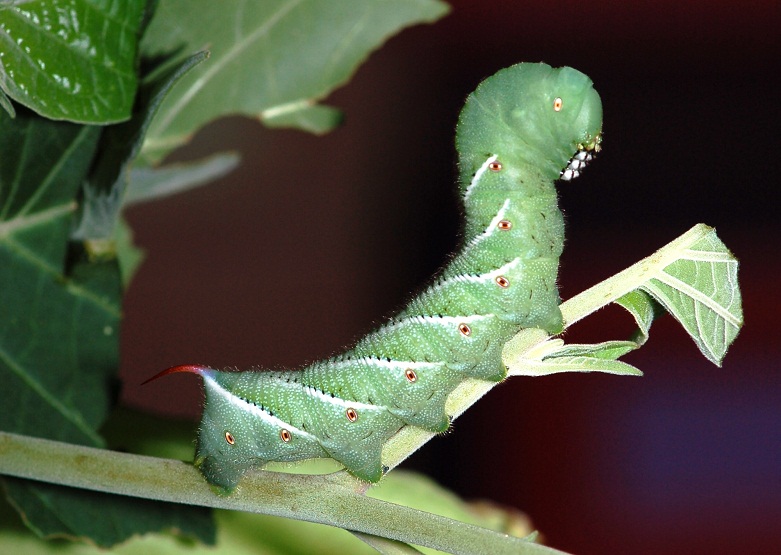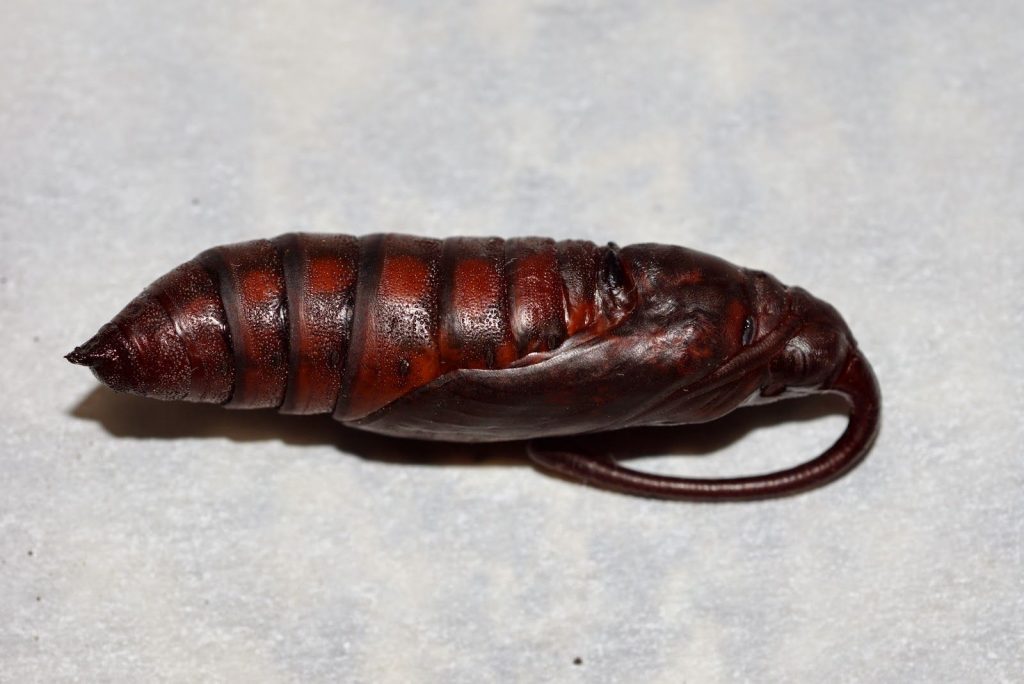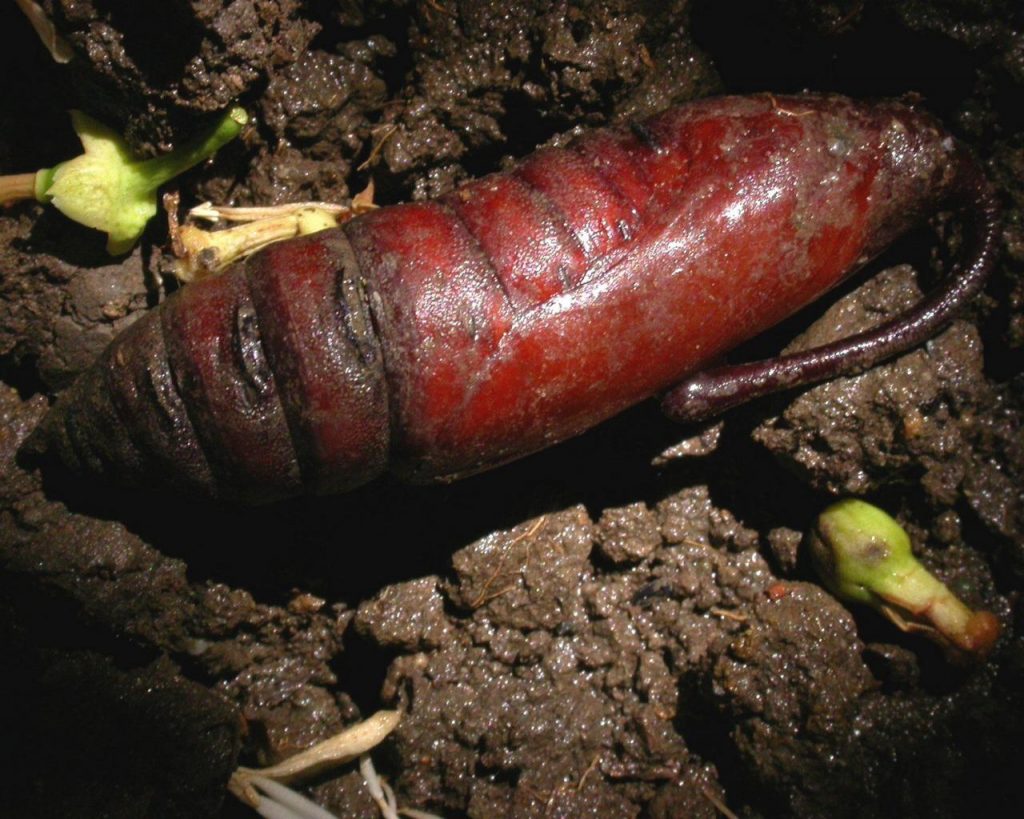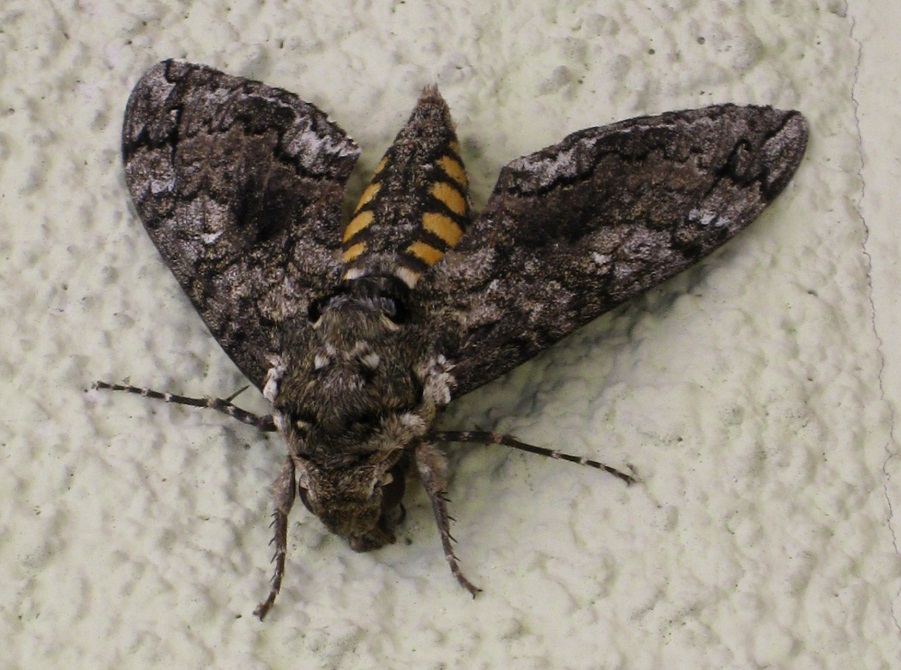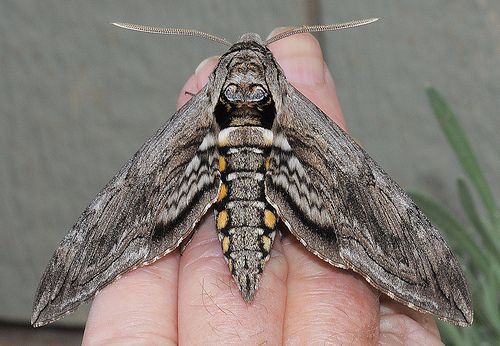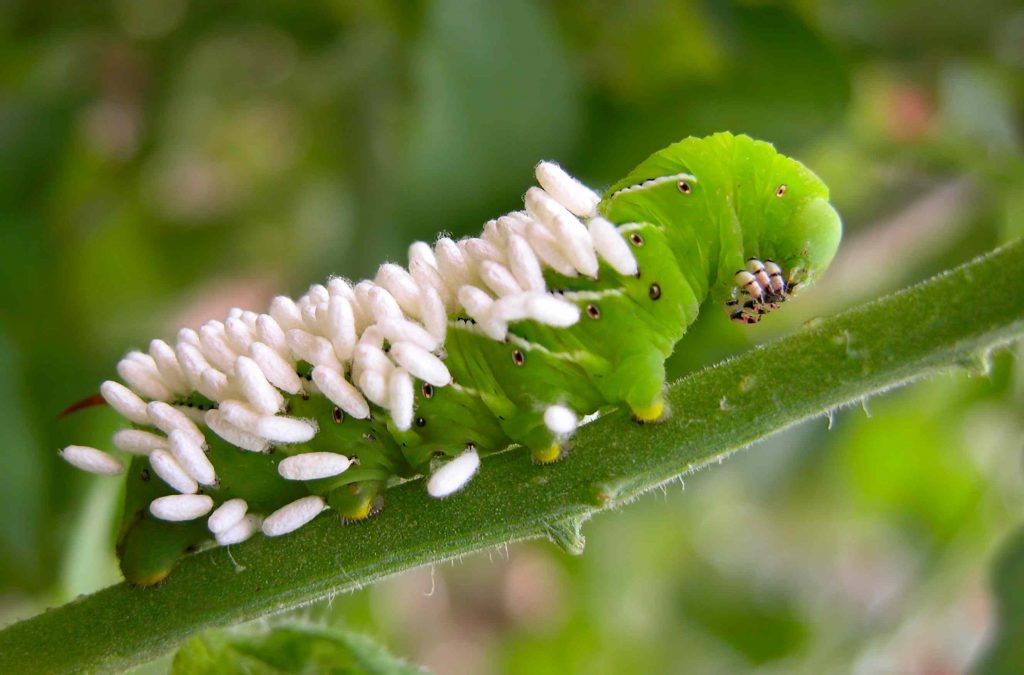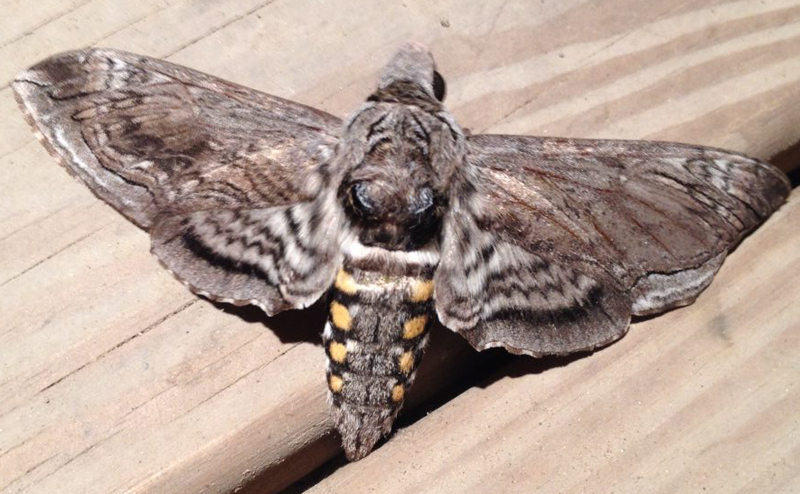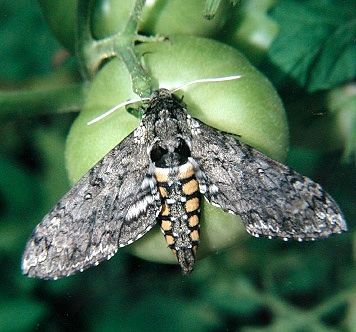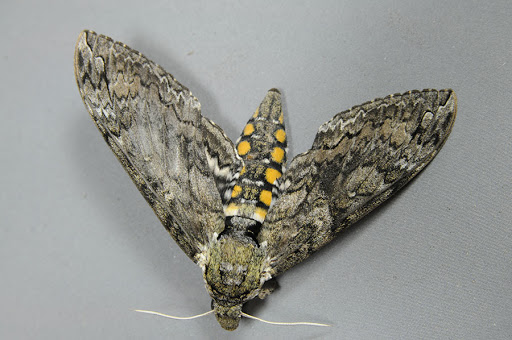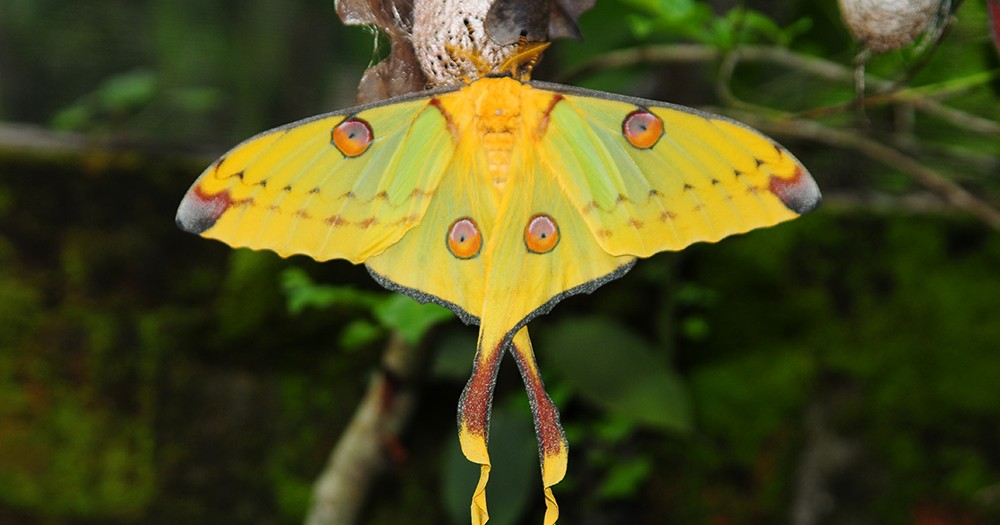Five-spotted Hawkmoth/Tomato Hornworm (Manduca quinquemaculata)
Tomato hornworm, as this moth is popularly called is actually the name of their larva that matures to become the five-spotted hawk moth. They are often confused with another related species, Manduca sexta, or the Carolina sphinx moth.
Both look similar in their larval (tobacco hornworm) or adult stage and share their host plants, yet the two have visible differences. The tobacco hornworm has seven white lines running diagonally to its body alongside red horns and a black border. On the other hand, the tomato hornworm has eight v-shaped markings and a black horn without any border. The five-spotted hawk moth has five yellowish-orange markings on its abdomen. In contrast, the Carolina sphinx moth has six abdominal markings.
Scientific Classification
- Family: Sphingidae
- Genus: Manduca
- Scientific Name: Manduca quinquemaculata
Description and Identification
Caterpillar
The larvae are large, and green having a length of about 10 cm when fully grown. Their rare end is marked with a pointed projection looking like horns. They even have v-shaped white markings on the sides of the body. During late spring-early summer, they hatch and eventually develop five instars upon maturation, with each instar being larger than the previous one.
Adult Moth
Sexual Dimorphism: Present
Color and Appearance: When opened, the wings appear brown and gray. The forewings have a mottled pattern, being larger, and the hind wings with a zig-zag pattern are smaller. When closed, the brownish color with a white v-shaped pattern is visible.
Other prominent features include a brown and white abdomen with five yellow spots arranged neatly in rows on each side.
Average Wingspan: 13 cm
Flight pattern: Consistent
Quick Facts
| Other names | Hawkmoth, sphinx 5-maculatus |
| Distribution | North America and Northern Australia |
| Habitat | In gardens near tomato, potato, or eggplant plantations |
| Predators | Wasps, lady bugs, green lacewings |
| Lifespan of adults | About a week |
| Host plants /Larva food | Plants of the Solanaceae family like eggplant, tobacco, potato, pepper, moonflower |
| Adult diet | Nectar of flowering plants like Oenothera caespitosa, Mirabilis multifora, and Datura meteloides |
Did You Know
- Since the larva has a horn-like projection and uses the tomato as their host plant, they have been named “tomato hornworm.”
- One of their host plants, Datura meteloides, has tropane alkaloids which, when ingested, produce an intoxicating effect on the adult moths, resulting in an erratic and inconsistent flight.
- They are considered a nuance to crop plants. Several attempts, including setting traps, have been used for controlling its population. Trichogramma and Cotesia congregate wasp species also serve as biological control agents since they attack the tomato hornworm’s eggs.
- They glow under black light, which can therefore be used to spot them among tomato foliage.
Scientific Classification
- Family: Sphingidae
- Genus: Manduca
- Scientific Name: Manduca quinquemaculata

